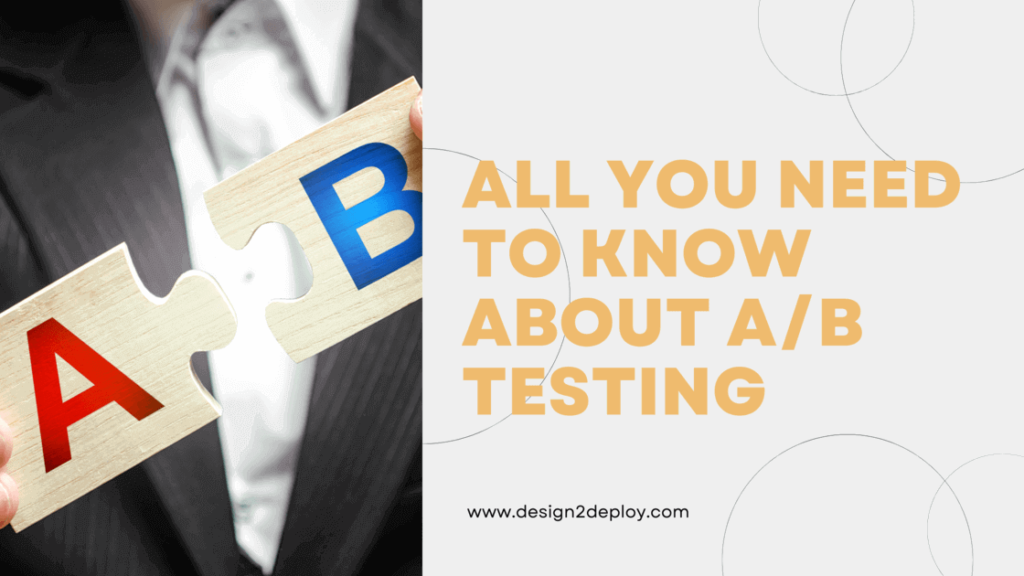A/B testing is a technique that helps users see different versions of a website or app at once. It involves testing two versions of an online presence against one another to see which one gets more clicks, engagement, and conversion — and therefore which one should be the permanent version going forward.
It’s used by companies of all types: from eCommerce sites looking to drive more traffic and sales to news outlets looking to increase reader engagement and even social media giants like Facebook and Google who use it to test design changes in real-time.
A/B testing has become so popular because it makes it easy for any company — no matter how technical or advanced its digital marketing strategy — to get a quick understanding of which elements work best for their audience.
Table of Contents
What is A/B testing?
A/B testing is a method used to compare two versions of a webpage and determine which one is more appealing to a specific audience.
It’s been around for several decades but has become especially popular in recent years. Because digital marketers look for new ways to increase their Return on Investment (ROI) and get more people to consume their content.
A/B testing is a form of user research that compares two versions of a webpage and determines which one is more appealing to a specific audience.
How to do A/B Testing
At its most basic, A/B testing is the process of creating two versions of a webpage: one “control” and one “test.” The two versions are then compared to see which performs better.
If the test version gets more engagement than the control, then it is considered more successful, and therefore the permanent version going forward. To get started, you’ll want to come up with two different versions of the pages you want to test.

These can be two different pages on the same site, or two different websites altogether. Next, you’ll want to collect some data on how people interact with these two pages.
Collect data like:
- How often do people click on the different elements on the page
- Which elements do people interact with the most
- Where people leave the page once they’ve arrived
- Which pages do people leave the page on altogether
And Based on answers to these questions, you can conclude the version that is going to be the permanent version.
When should you do A/B testing?
A/B testing is most effective when you’re trying to find the best path to take in order to achieve a specific goal.
While the method is useful and worthwhile in any scenario, it can be especially valuable when you’re doing market research and trying to figure out which tactics are working best for your audience.
A/B testing is especially useful when you want to:
- Find out what changes are making the biggest impact on your audience
- Optimize your design for specific devices such as mobile phones or desktop computers
- Learn more about what content works best for your audience
- Better understand how your audience is engaging with your pages
Which tools to use for A/B testing
There are a ton of tools that can help with A/B testing, but they can all be broken down into two categories: marketing automation and software.
Marketing automation tools like Google’s AdWords, Facebook Ads Manager, and Amazon Ads can help you create unique versions of your ads and track which ones perform the best and are getting the most clicks.
Software A/B Testing – Google Analytics and other software also lets you track website traffic, analyze how visitors interact with different pages, and see which ones get the most attention and clicks. You can use software like active campaign, Instapage, and Leadpages that have A/B testing feature included.
The Benefits of A/B Testing
There are multiple benefits to performing A/B testing of a webpage as well as an ad. Here I have listed a few of the benefits:

- A/B testing can help you find out what changes in your online experience are making the biggest impact on your audience.
- This helps you optimize your design for specific devices such as mobile phones or desktop computers
- You can better understand what content works best for your audience.
- A/B testing can also help you determine what content people are engaging with the most, which helps you determine what to create next,
- Helps you know more about what features to add to your webpage
- Find where your visitors are struggling while navigating through the webpage and what they find interesting and what not.
Use cases for A/B testing
Market research: A/B testing is excellent for finding out what content is performing best and what design changes are making the biggest impact. You can also use it to see what kind of content is working best, and what content is getting the least engagement.
Optimization: A/B testing is a great way to optimize your overall digital marketing strategy. You can use it to optimize your design for specific devices such as mobile phones or desktop computers. You can also use it to find the best path to take for your business.
Learning: A/B testing can help you learn more about what content works best for your audience. This is especially helpful if you run a blog or content-heavy site since you want to make sure your content is getting the most attention.
Planning: Market research is a great way to help you plan your content for the future. You can use the data you collect to create a content calendar for the year and determine what posts to create next.
Designing: Optimization can help you find out what elements on your website are getting the most clicks and engagement, which helps you find places to improve. Designing your pages around these elements can make your digital marketing strategy much more successful.
Conclusion
A/B testing is one of the most basic and effective tools for marketers to use in order to better understand their audience and their online experience. In just a few minutes, you can create two different versions of your website and analyze which one performs better.
This can help you find out what changes are making the biggest impact on your audience, optimize your design for specific devices such as mobile phones or desktop computers, and learn more about what content works best for your audience.



